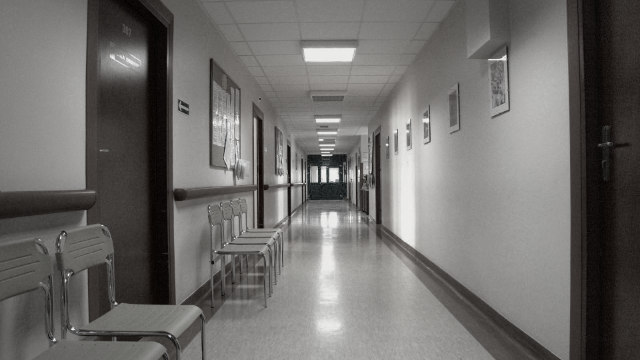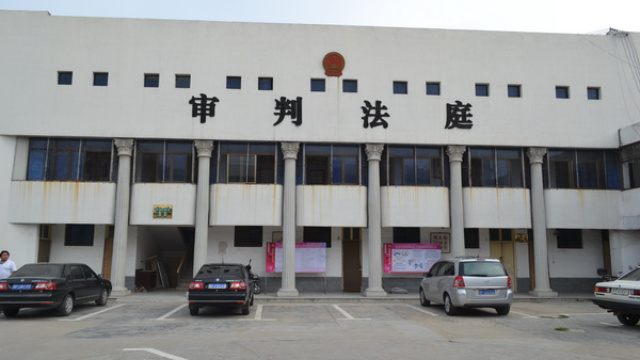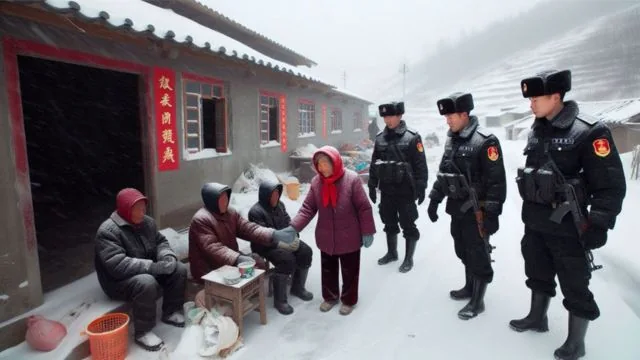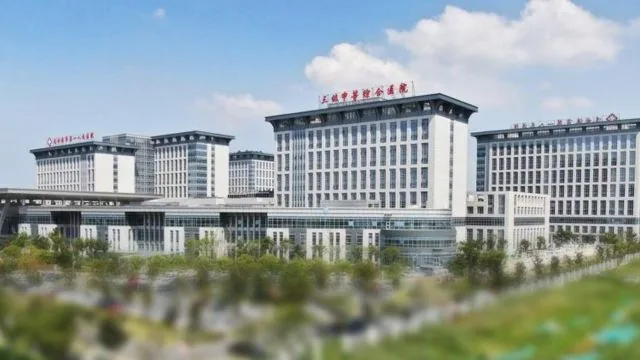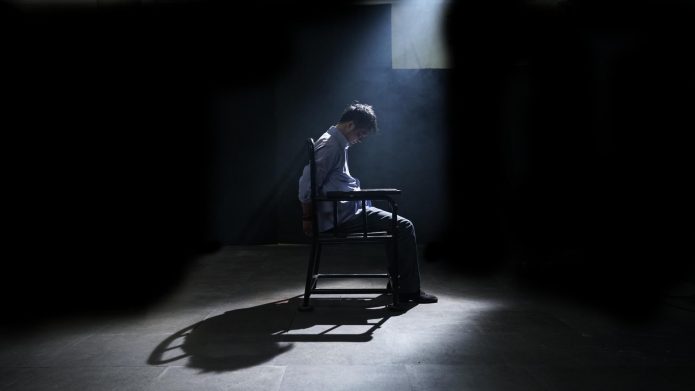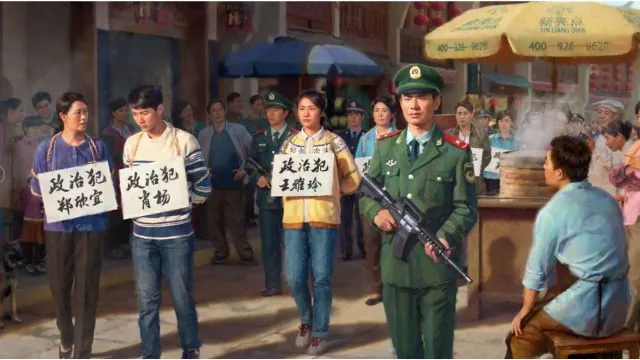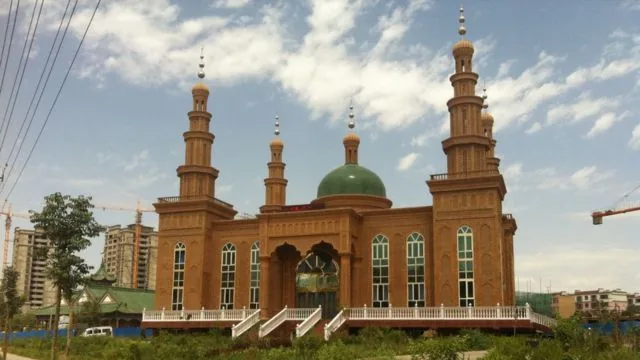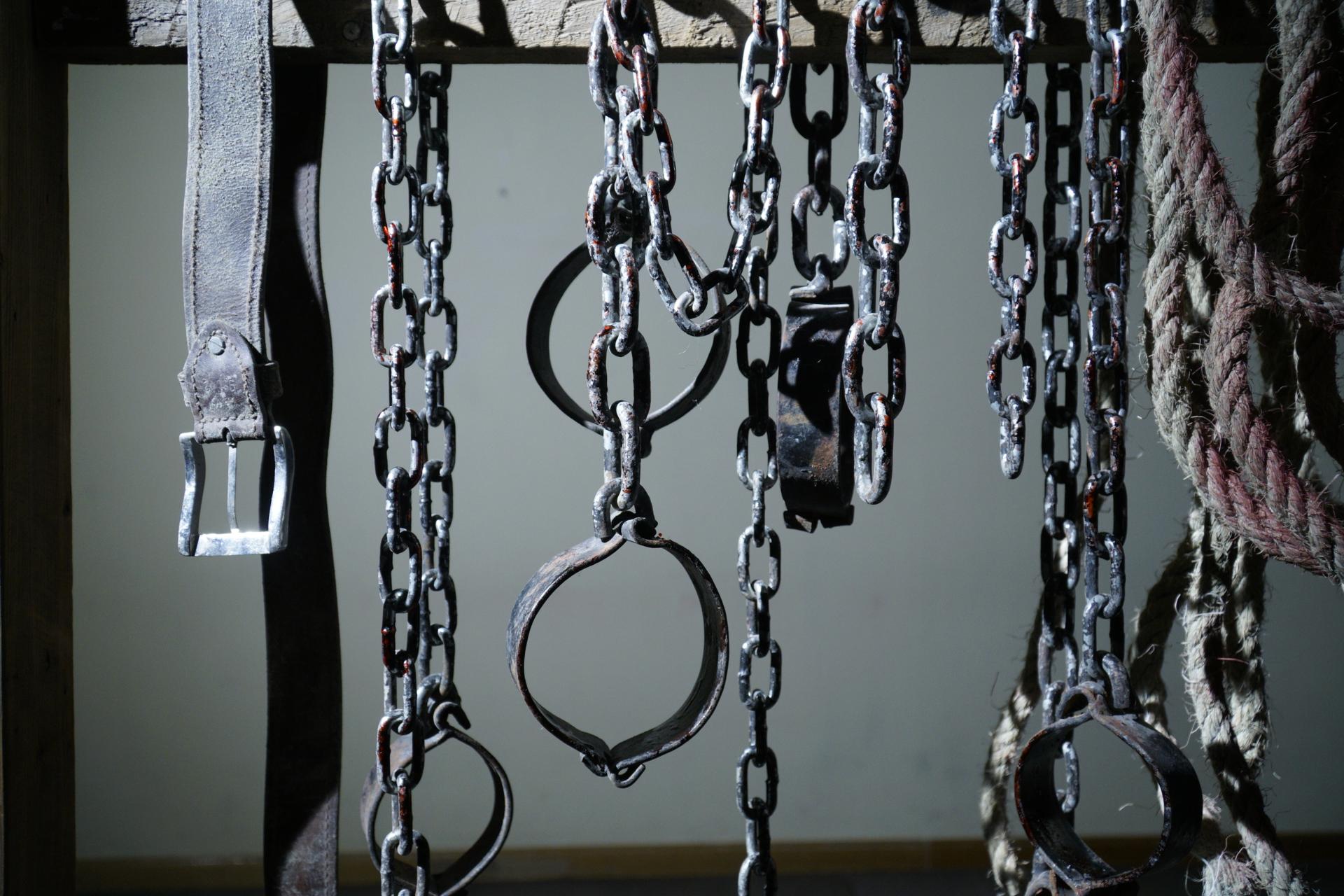Thousands of protesters crowded onto the streets of Hong Kong this weekend in two days of renewed protest at the city authorities’ use of emergency powers, braving torrential rain, roadblocks and a total shutdown of the subway network.
Chief executive Carrie Lam on Friday announced a ban on the wearing of masks at public gatherings, invoking the draconian Emergency Regulations Ordinance to do so.
Protesters hit back by donning almost every kind of conceivable face-covering, including Anonymous masks, Winnie-the-Pooh masks in a side-swipe at Chinese President Xi Jinping, as well as the now-ubiquitous respirators to guard against tear gas and regular surgical masks.
Others braided their hair over their faces, or wore paper bags with holes cut for eyes.
Thousands of people joined a river of umbrellas that flowed through the night-life district of Wanchai to the usually busy shopping district of Causeway Bay. But most shops had their shutters down in anticipation of the protests.
Bus passengers and people in private cars were scene lining up near the Eastern Harbour Crossing as police checked their ID and searched their bags, live video footage showed.
In the Kowloon-side district of Mong Kok, masked protesters also gathered in large numbers, making their way down Nathan Road in defiance of the ban and the closure of most Mass Transit Railway (MTR) stations on Saturday. The MTR said it had reopened some stations on Sunday, but many others remained closed.
Tear gas, rubber bullets and water cannon
Police fired tear gas, rubber bullets and water cannon at crowds in Causeway Bay, while the Mong Kok protesters constructed elaborate barricades and a Roman-style catapult to lob bricks in the direction of riot police.
Protesters also flung Molotov cocktails at police, leaving the tarmac aflame and accidentally setting fire to a reporter with the government broadcaster, RTHK, the station said.
Tear gas was also deployed in Central, Wanchai, Mong Kok, Prince Edward and Sham Shui Po.
Meanwhile, China’s People’s Liberation Army (PLA) issued a warning to protesters in its first public statement since protests escalated in early June.
Occupants of the PLA’s East Kowloon Barracks raised a yellow warning flag and shone spotlights on protesters, watching them through binoculars and filming them with cameras. The warning said that anyone shining laser pointers at the building would be risking arrest. Dozens of laser pointers were nonetheless pointed at the building.
Two people were treated for injuries after a taxi slammed into a group of protesters in Sham Shui Po on Sunday afternoon. A woman was taken to hospital with broken bones after the taxi rammed the crowd, according to social media posts and video footage from the scene.
Video footage also showed protesters kicking and beating the driver of the cab, before being pulled away by other protesters. He was later given first aid as protesters formed a human chain behind him to ward of further attacks.
Police issued a tear gas warning in the district shortly after 5.00 p.m., firing it in spite of an elderly man with limited mobility who was unable to leave quickly.
Political crisis
Live ammunition was also reportedly fired near Prince Edward station.
A Kowloon protester surnamed Chan said nobody supported the use of emergency powers to resolve the political crisis that gripped the city when Lam first floated plans to allow the extradition of alleged criminal suspects to face trial in mainland Chinese courts.
“The government is getting more and more outrageous,” Chan said. “Nobody finds the use of emergency regulations acceptable.”
“I am worried that we will see the decrees coming thick and fast now,” he added.
Riot police also carried out raids on the Hong Kong Baptist University campus, provoking an angry reaction from students, who shone flashlights at the officers and shouted that they were “under university jurisdiction: you can’t come in!”
“This is a university,” one student argued. “Private property!”
A woman who joined the march on Hong Kong Island said the main reason she had come out was to protest over the use of emergency powers.
“Actually the most worrying thing is the use of the emergency laws, although I am worried about the mask ban too,” she said. “They can do anything under emergency laws, including stopping us from getting our money out of the bank, or stopping us from leaving the country.”
“That’s why opposing the use of emergency regulations is the most important thing,” she said.
Injunction reject by court
Protesters set up barricades and threw projectiles, vandalizing the Bank of China headquarters in Central district, while police fired at them from a nearby flyover as the marchers passed police headquarters.
Some carried banners bearing slogans calling on Lam to resign, and for the government to meet all five of the protest movement’s demands: the formal withdrawal of a law enabling extradition to mainland China; an independent inquiry into police violence; an amnesty for thousands of arrested protesters; an end to the description of protesters as ‘rioters’; and fully democratic elections to the Legislative Council (LegCo) and for the post of chief executive.
Chanting “Disband the Hong Kong police!” and “Reclaim Hong Kong! Revolution in our Time!” the protesters also waved black versions of the Hong Kong flag, that have become a symbol of the protest movement.
Hong Kong’s High Court on Sunday rejected an application by pro-democracy lawmakers for an interim injunction against the mask ban, although it has yet to rule on whether or not to allow a judicial review into the move.
Twenty-four pro-democracy lawmakers had argued that the ban was unconstitutional because it had bypassed LegCO.
They said some people have already been arrested for violating the mask ban, and called on the authorities not to enforce it.
They also echoed protesters’ concerns that emergency powers could be used to impose any number of restrictions on people’s rights and freedoms.
Anyone who violates the mask ban could face a prison term of up to one year and a fine of up to HK$25,000.
Police can also order people to remove face masks. Those who refuse could get six months in prison or a HK$10,000 fine.
Reported by Wong Lok-to for RFA’s Cantonese Service, and by Lu Xi for the Mandarin Service. Translated and edited by Luisetta Mudie.
Source: Copyright © 1998-2016, RFA. Used with the permission of Radio Free Asia, 2025 M St. NW, Suite 300, Washington DC 20036. https://www.rfa.org.



